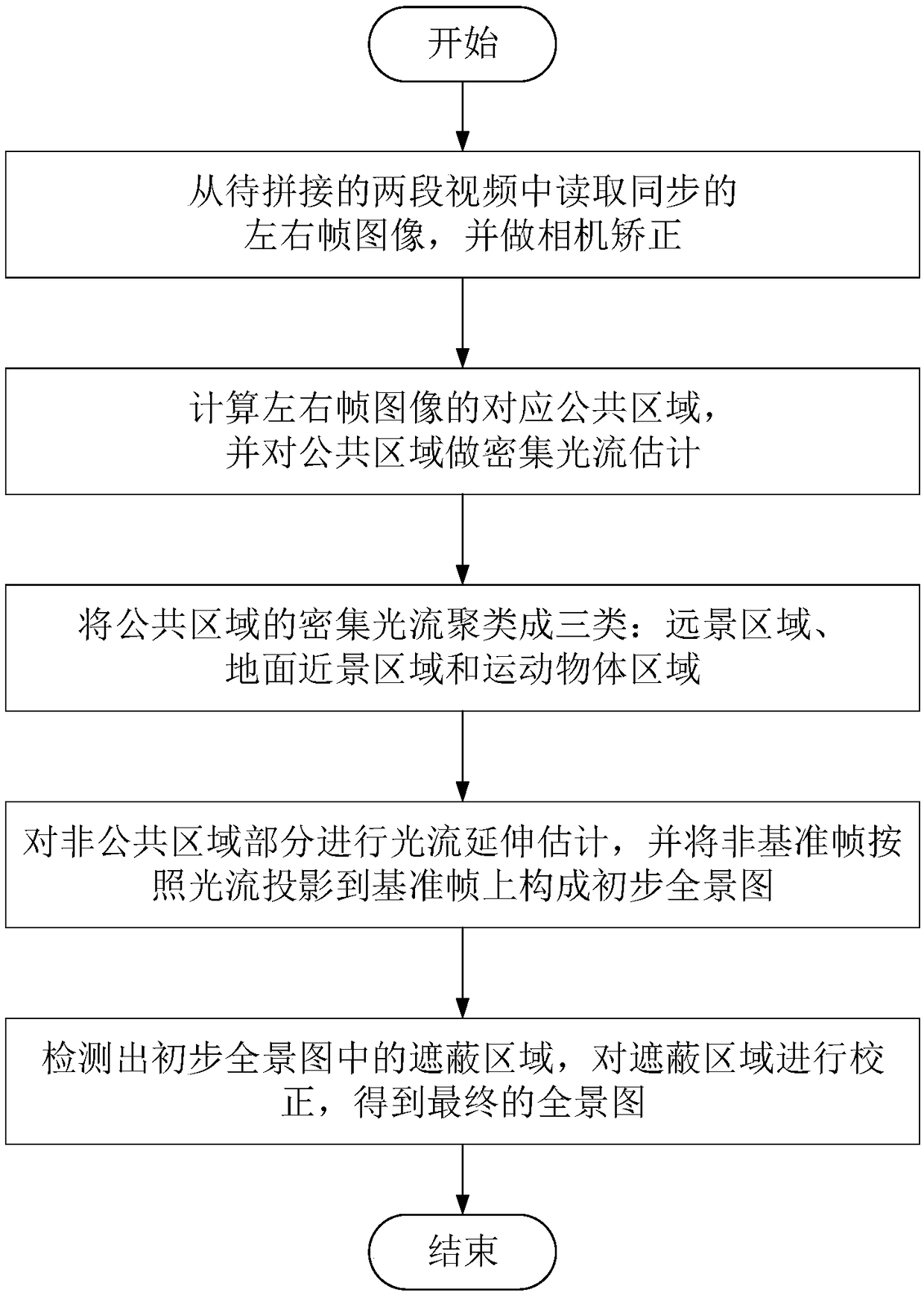A video mosaic method based on optical flow
A video splicing and optical flow technology, applied in the field of video splicing, can solve the problems of large difference in lighting, jump between frames, affecting visual effects, etc., to save computing time, reduce the amount of calculation, and achieve the effect of accurate optical flow field.
- Summary
- Abstract
- Description
- Claims
- Application Information
AI Technical Summary
Problems solved by technology
Method used
Image
Examples
Embodiment
[0034] The present embodiment provides a video splicing method based on optical flow, and the method includes the following steps:
[0035] Step 1: Reading and preprocessing of left and right frame images;
[0036] Step 2: Calculate the corresponding common areas of the left and right frame images, form the common areas of the video to be spliced, and perform dense optical flow estimation on the common areas;
[0037] Step 3: Cluster the dense optical flow in the public area into three categories;
[0038] Step 4: Perform extended estimation of optical flow for non-public areas, and project non-reference frames onto reference frames according to optical flow to form a preliminary panorama;
[0039] Step 5: Detect and correct the masked area of the preliminary panorama to obtain the final panorama;
[0040] Step 6: Go back to Step 1 and read the next pair of left and right frame images.
[0041] Perform steps 1 to 6 again.
[0042] Further, the video to be spliced confo...
PUM
 Login to View More
Login to View More Abstract
Description
Claims
Application Information
 Login to View More
Login to View More - R&D Engineer
- R&D Manager
- IP Professional
- Industry Leading Data Capabilities
- Powerful AI technology
- Patent DNA Extraction
Browse by: Latest US Patents, China's latest patents, Technical Efficacy Thesaurus, Application Domain, Technology Topic, Popular Technical Reports.
© 2024 PatSnap. All rights reserved.Legal|Privacy policy|Modern Slavery Act Transparency Statement|Sitemap|About US| Contact US: help@patsnap.com









